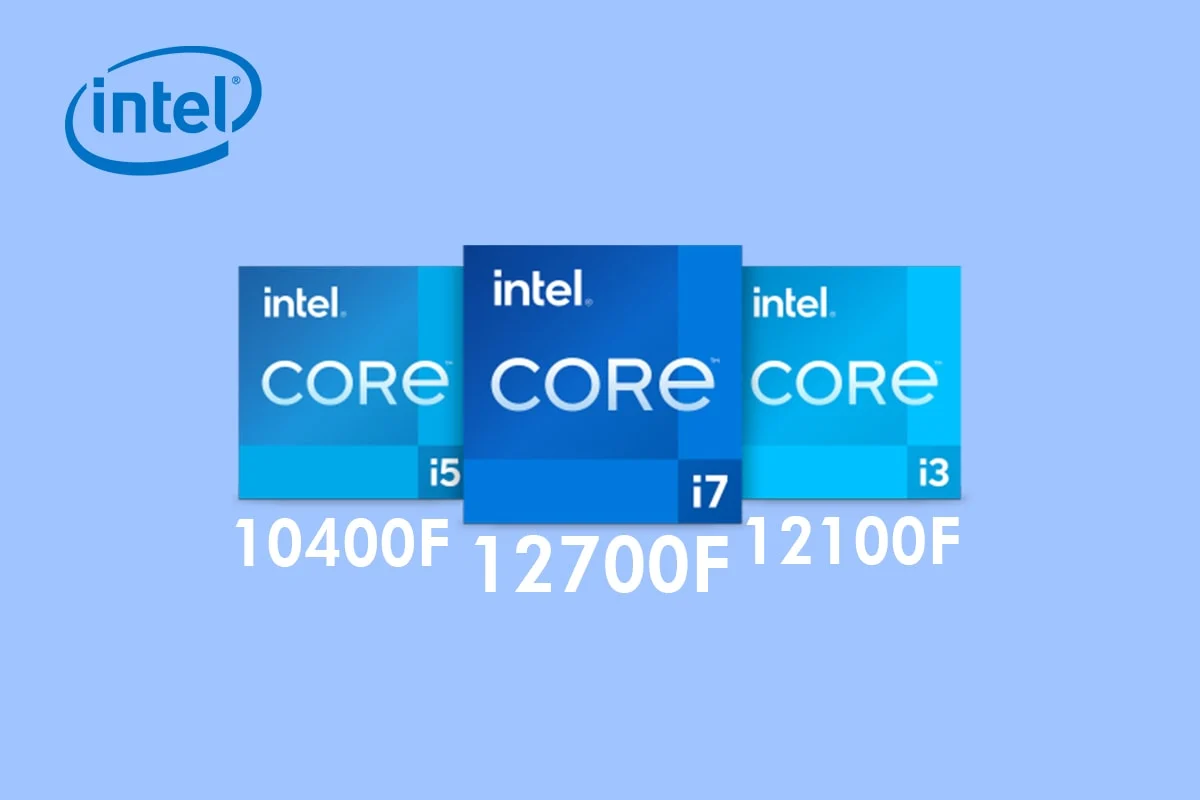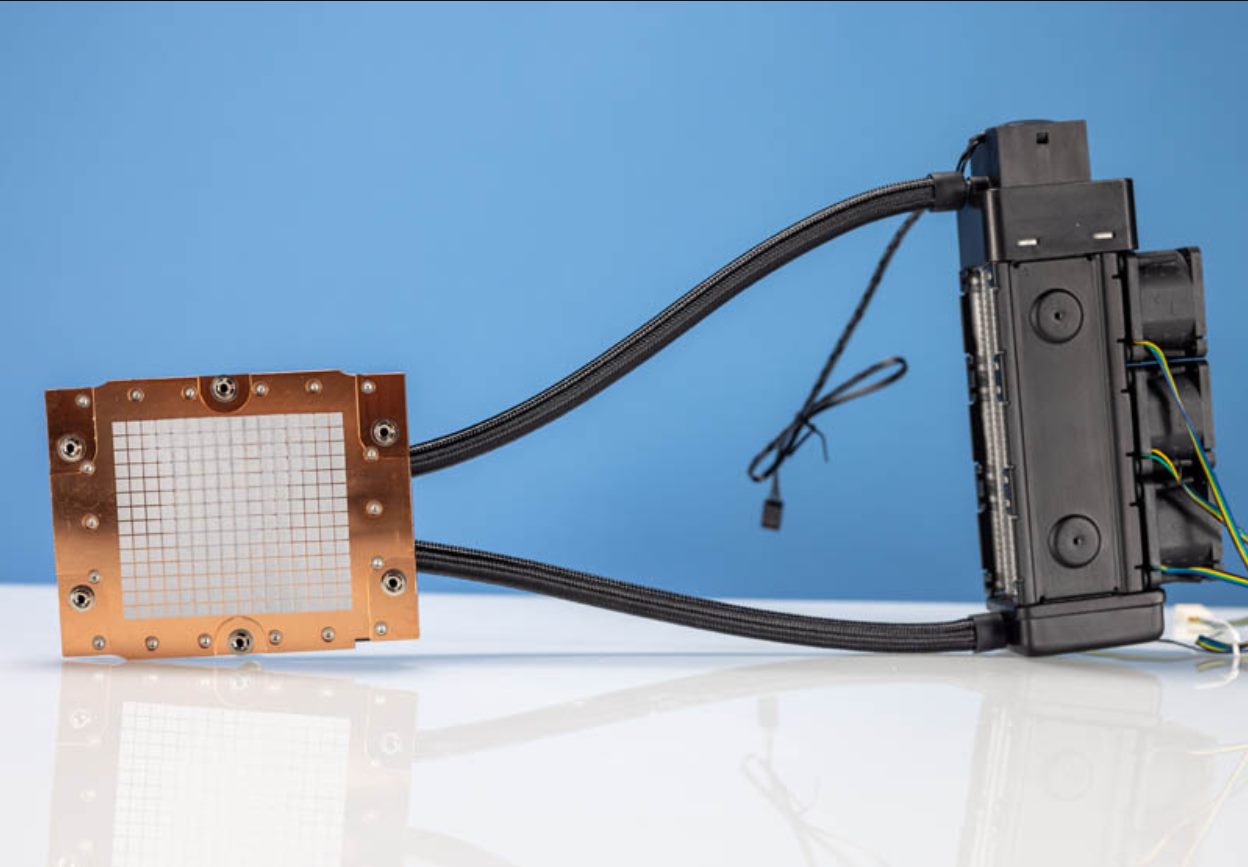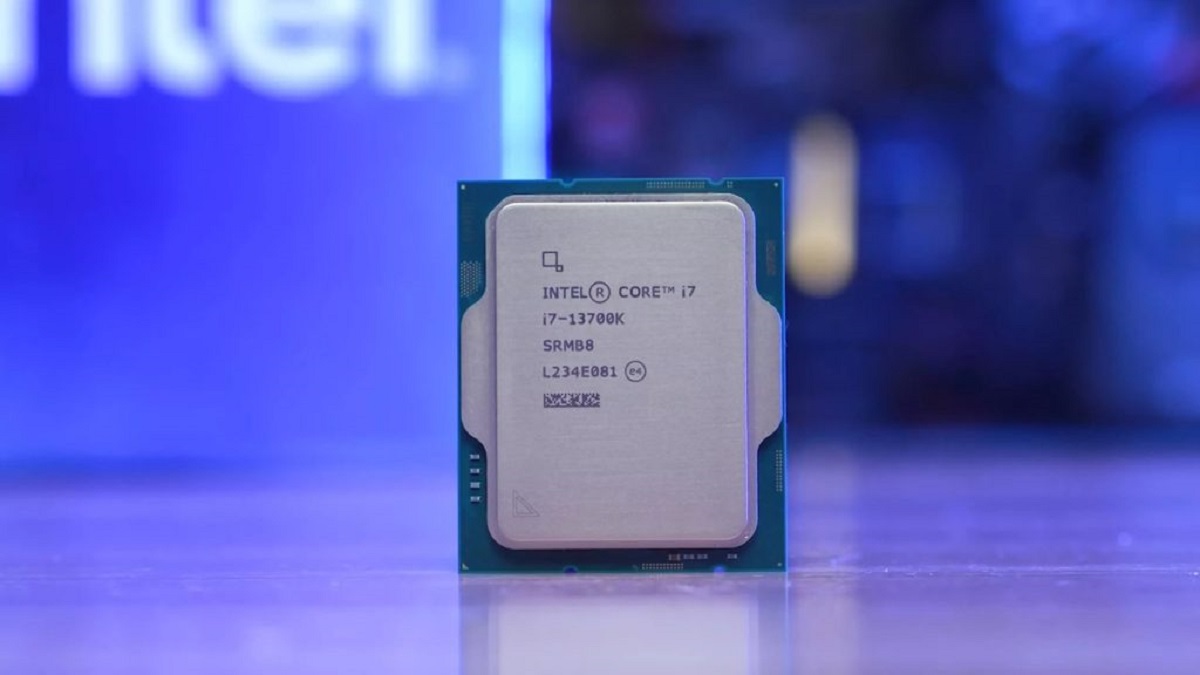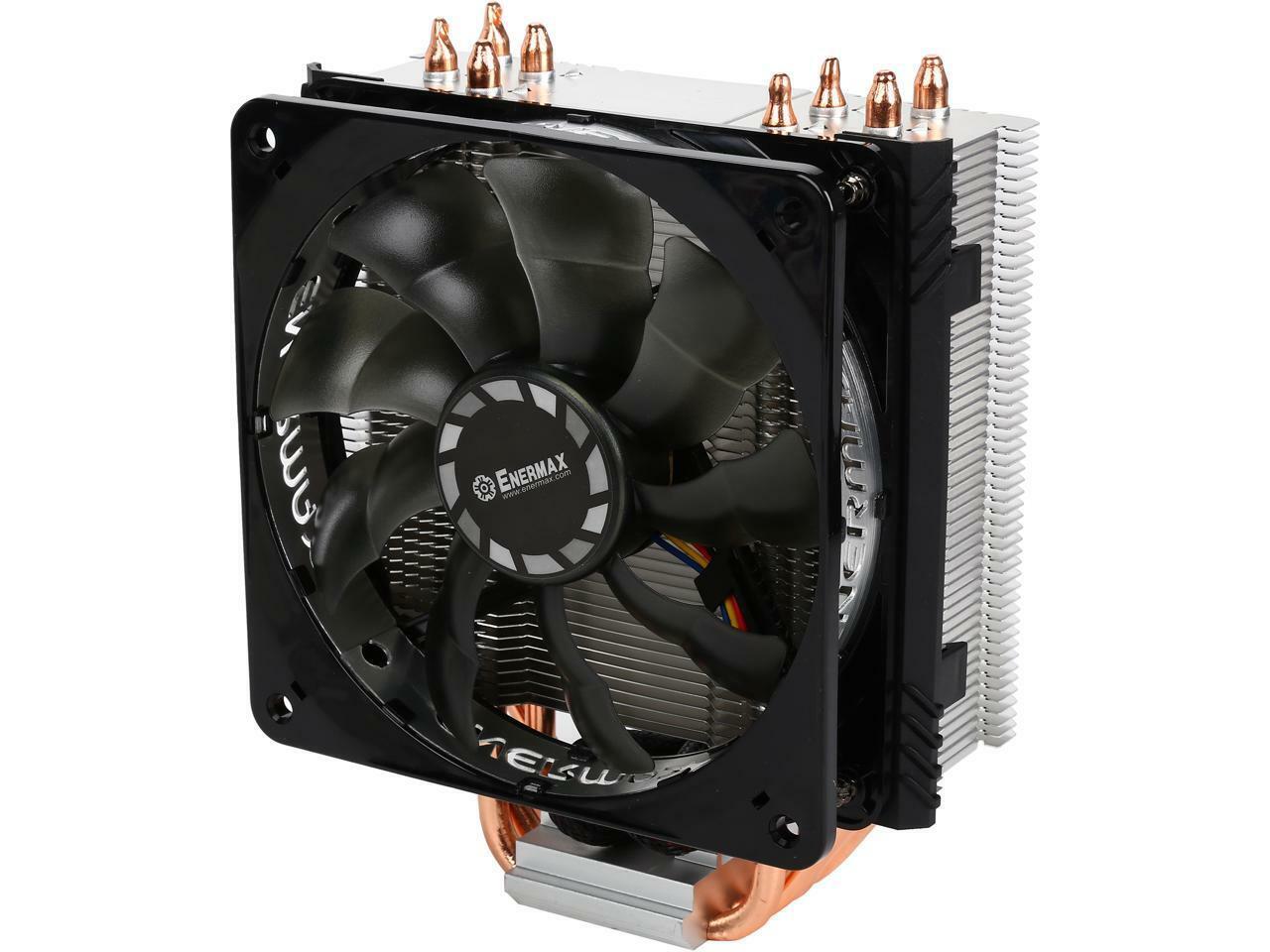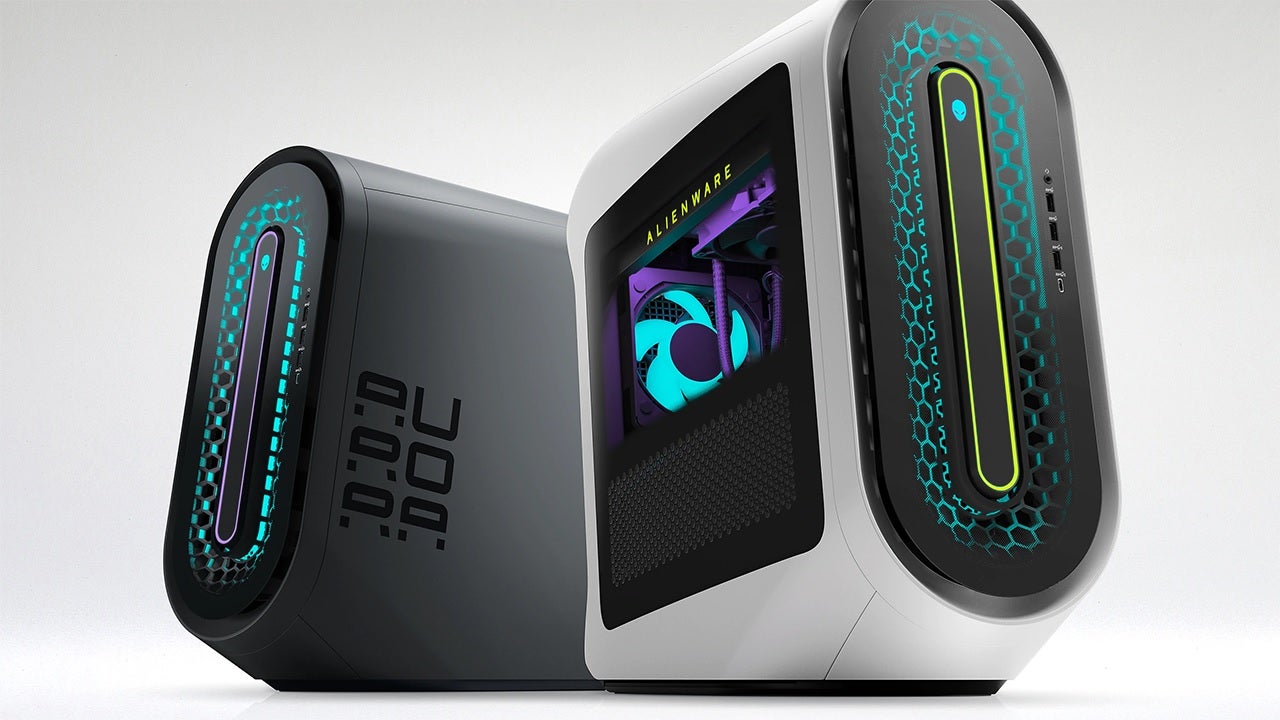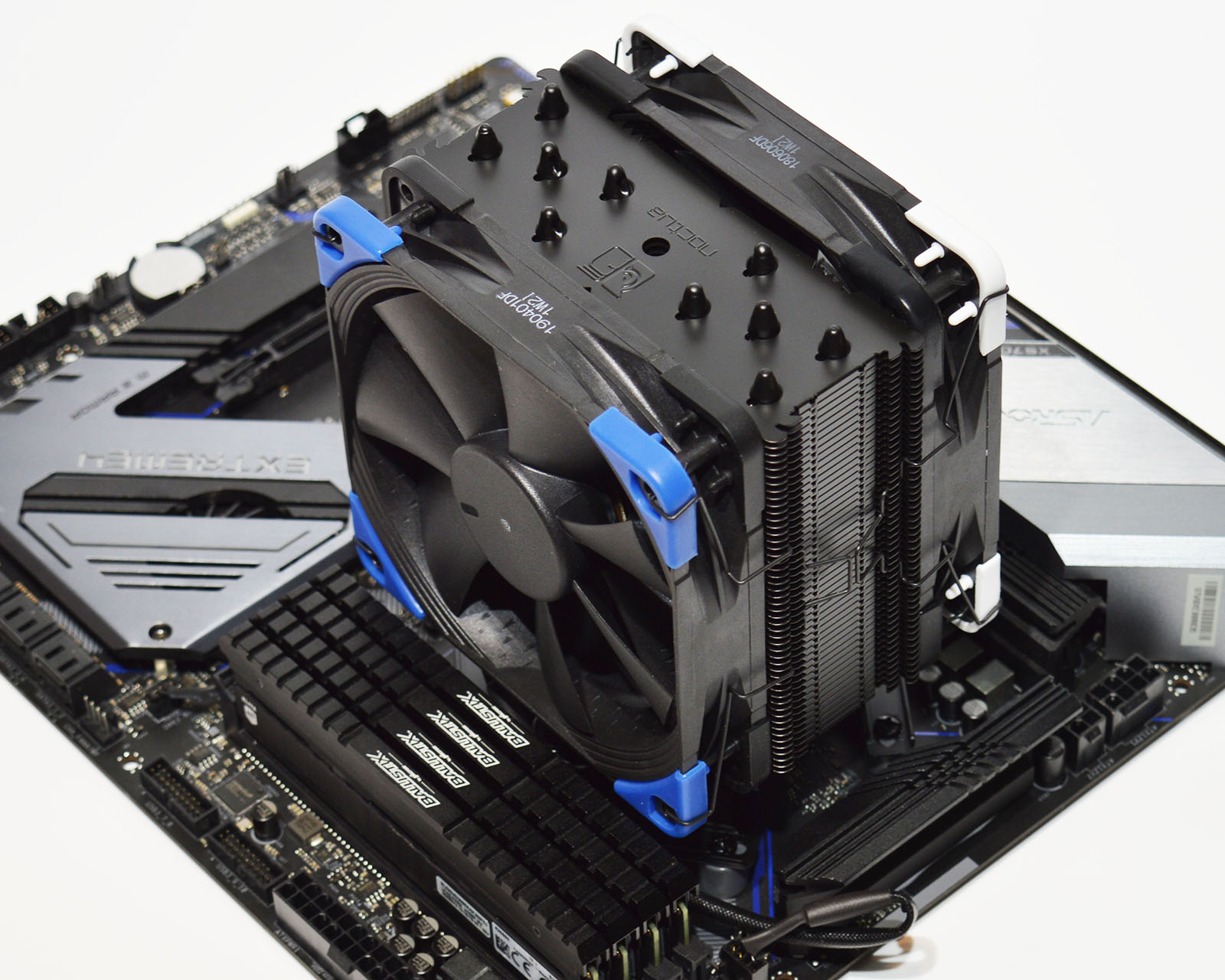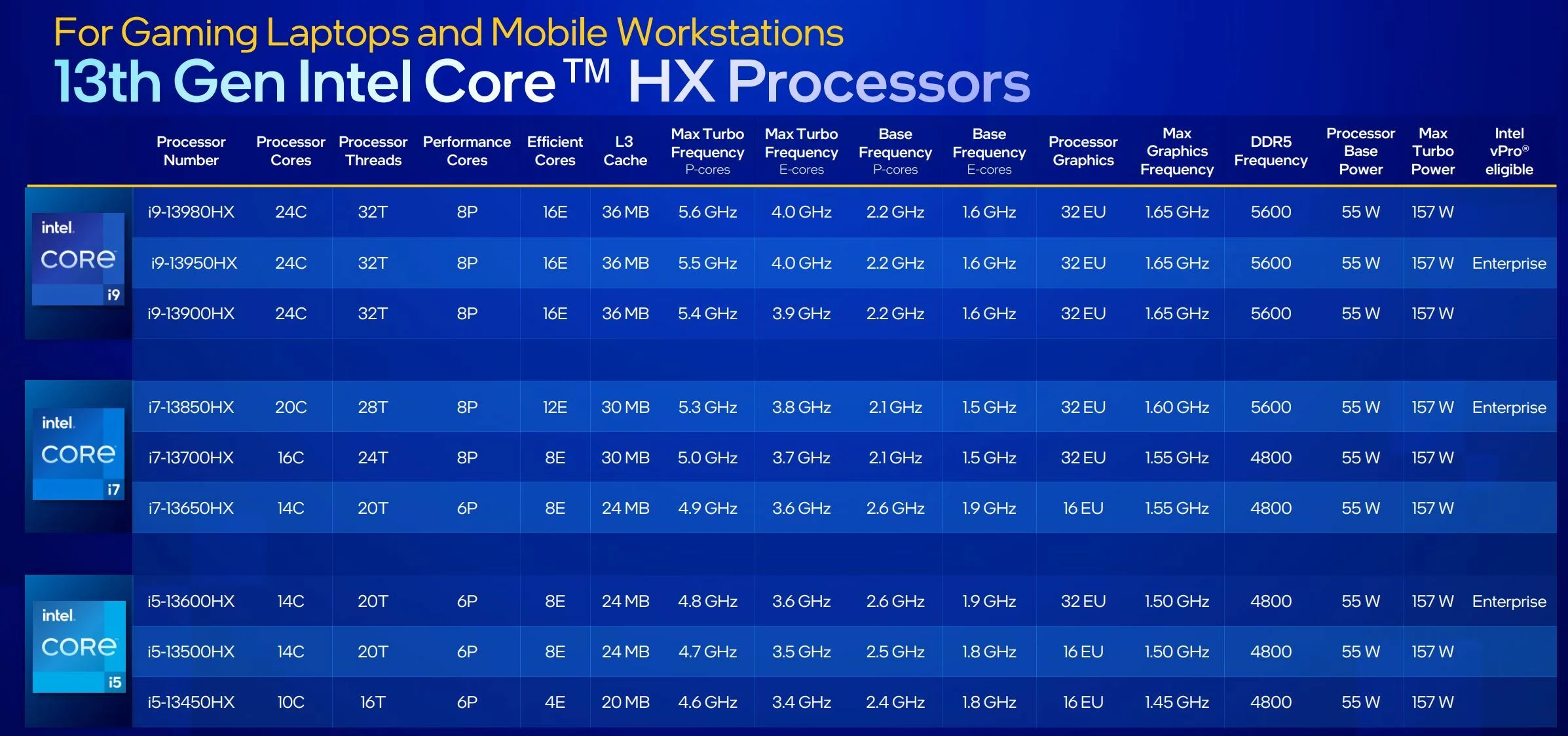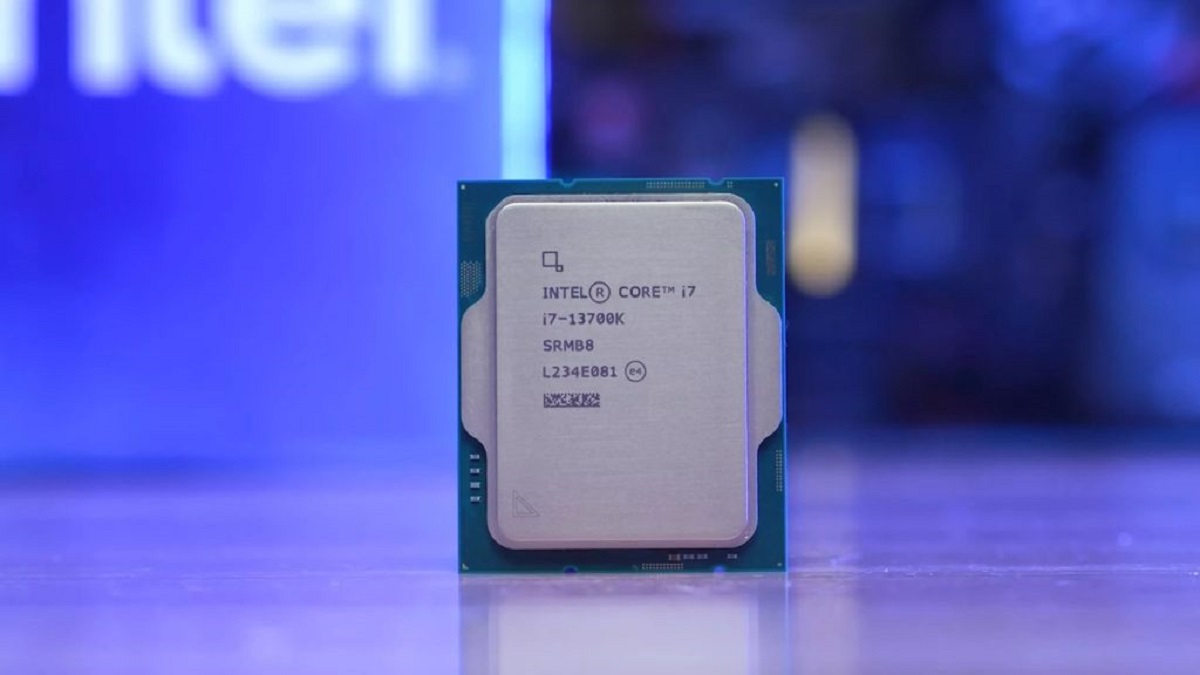Introduction
The F-Series processors from Intel have become a significant addition to their lineup, offering a unique set of features and benefits. Designed for high-performance computing, these processors have caught the attention of tech enthusiasts and professionals alike.
With their impressive processing power and advanced technologies, the F-Series processors deliver unmatched performance in various applications, from gaming to content creation and data analysis. But what exactly does the “F” in the Intel CPU model number stand for? In this article, we will dive deeper into the world of Intel F-Series processors to discover their significance and explore their capabilities.
The Intel F-Series processors are known for their exceptional clock speeds, multiple cores, and advanced architecture. While they might seem similar to the non-F counterparts, there is a defining difference between the two. Unlike their counterparts, the F-Series processors lack the integrated graphics unit. This omission allows them to offer enhanced processing power by reallocating resources that would have otherwise been devoted to the integrated graphics.
By eliminating the integrated graphics unit, Intel has given users the ability to prioritize the processing performance of their systems. This makes the F-Series processors ideal for individuals who already have a dedicated graphics card or those who require maximum CPU power without the need for built-in graphics capabilities.
The absence of integrated graphics also brings cost benefits, making the F-Series processors more affordable than their non-F counterparts. This makes them a popular choice among budget-conscious users who want powerful CPUs without paying extra for integrated graphics that they may not need.
Furthermore, the F-Series processors offer excellent overclocking potential. With unlocked multipliers and higher power limits, they provide enthusiasts with the flexibility to push their systems to the limit and extract maximum performance from their CPUs. Whether you are a gamer seeking higher frame rates or a content creator looking to reduce rendering times, the F-Series processors can deliver the required boost.
In the next sections, we will delve into the performance comparisons, features and specifications, overclocking potential, thermal design power (TDP), and compatible motherboards for Intel F-Series processors. So, let’s get started and explore the world of Intel F-Series CPUs.
F-Series Processors
The F-Series processors from Intel are a specialized lineup of CPUs that offer unparalleled performance and flexibility for demanding computing tasks. These processors are designed for users who prioritize raw processing power and have dedicated graphics solutions, making them an ideal choice for gamers, content creators, and professionals in various fields.
One of the key features of the F-Series processors is the absence of integrated graphics. Unlike the non-F counterparts, these processors do not have a built-in GPU, which allows for more resources to be allocated towards CPU performance. This means more cores, higher clock speeds, and better overall processing capabilities.
The lack of integrated graphics also results in cost savings. Without the need for a GPU, the F-Series processors are priced lower than their non-F counterparts, making them an attractive option for budget-conscious users who already have a dedicated graphics card or prefer to invest more in CPU performance.
When it comes to performance, the F-Series processors do not disappoint. With advanced architectures, multiple cores, and high clock speeds, these processors excel in handling demanding tasks such as gaming, video editing, 3D modeling, and data analysis. They can effortlessly handle resource-intensive applications, delivering smooth and seamless performance.
Additionally, the F-Series processors offer excellent overclocking potential. With unlocked multipliers and higher power limits, enthusiasts can push their CPUs to their limits and extract even more performance. This allows for higher frame rates in gaming, faster rendering times in content creation, and improved overall system responsiveness.
Overall, the F-Series processors are a powerful and cost-effective choice for users who require maximum CPU performance and already have a dedicated graphics card. With their superior processing power, advanced technologies, and overclocking capabilities, these processors are well-suited for gamers, content creators, and professionals seeking top-tier performance.
In the following sections, we will explore the performance comparisons, features and specifications, overclocking potential, thermal design power (TDP), and compatible motherboards for Intel F-Series processors. So, stay tuned to learn more about these impressive CPUs and how they can elevate your computing experience.
Performance Comparison
When it comes to performance, the Intel F-Series processors are true powerhouses. These CPUs are designed to deliver exceptional processing power and can handle even the most demanding tasks with ease. Let’s take a closer look at how they compare to their non-F counterparts and other competing processors.
One notable advantage of the F-Series processors is their higher clock speeds. With faster operating frequencies, these CPUs can complete tasks more quickly, resulting in improved overall system responsiveness. Whether you’re gaming, editing videos, or running resource-intensive applications, the F-Series processors excel in delivering smooth and lag-free performance.
The absence of integrated graphics in the F-Series processors allows for more resources to be dedicated to CPU performance. This means that these processors can allocate more power and processing capabilities to handle complex calculations and heavy workloads. As a result, they outperform their non-F counterparts in tasks that heavily rely on CPU performance, such as data analysis, scientific simulations, and rendering.
Furthermore, the F-Series processors offer excellent multi-threaded performance. With multiple cores and high-thread counts, these CPUs excel in tasks that can leverage parallel processing. This makes them particularly well-suited for content creation, where applications like video editing, 3D modeling, and animation benefit greatly from multi-threaded performance.
In comparison to other competing processors in the market, the F-Series processors hold their ground and often surpass the competition. From benchmarks to real-world performance tests, the F-Series processors consistently outperform processors with similar specifications and price points. This makes them a compelling choice for those seeking top-tier performance without breaking the bank.
However, it’s important to note that the overall performance of any processor is not solely dependent on its model number. Factors such as system configuration, cooling solutions, and software optimization also play a crucial role in determining the actual performance. Therefore, it’s recommended to consider these factors when comparing the performance of F-Series processors to other options.
In summary, the Intel F-Series processors deliver exceptional performance that surpasses their non-F counterparts and competes strongly with other processors in the market. With their higher clock speeds, dedicated CPU power, and excellent multi-threaded performance, these processors are a top choice for users who demand superior processing capabilities.
Features and Specifications
The Intel F-Series processors come packed with a range of features and specifications that make them an attractive choice for users who prioritize high-performance computing. Let’s explore some of the key features and specifications that set these processors apart.
One of the standout features of the F-Series processors is their high core count. With multiple cores, these CPUs can handle multithreaded workloads with ease, allowing for faster and more efficient task execution. Whether you’re running complex simulations, rendering 3D graphics, or multitasking with resource-intensive applications, the F-Series processors deliver impressive performance.
In addition to the core count, the clock speed of these processors is another noteworthy specification. The F-Series processors often boast high clock frequencies, allowing for faster data processing and improved overall system performance. This makes them particularly well-suited for tasks that require quick calculations and responsiveness, such as gaming and real-time content creation.
The lack of integrated graphics is another key differentiator for the F-Series processors. While this may be a drawback for some users, it offers an advantage to those who already have a dedicated graphics card or prioritize CPU performance over integrated graphics capabilities. By removing the integrated graphics unit, these processors can allocate more resources to enhance CPU performance, resulting in improved processing power and efficiency.
Another important specification to consider is the cache size of the F-Series processors. The cache acts as a temporary storage space that allows the processor to quickly access frequently used data. With a larger cache size, these processors can deliver improved performance by reducing the data retrieval time and optimizing overall system efficiency.
Furthermore, the F-Series processors support advanced technologies that enhance their performance and efficiency. These include features like Intel Turbo Boost Technology, which dynamically adjusts clock speeds to deliver an additional performance boost when needed, and Intel Virtualization Technology, which enables efficient resource allocation for virtualized environments.
When it comes to power consumption, the F-Series processors have a Thermal Design Power (TDP) rating that indicates their maximum power usage and heat dissipation. This rating is an important consideration for users who need to balance performance with energy efficiency and cooling requirements.
In summary, the Intel F-Series processors offer a range of impressive features and specifications. From high core counts and clock frequencies to a lack of integrated graphics and support for advanced technologies, these processors are designed to deliver powerful and efficient performance. Whether you’re a gamer, content creator, or professional in any field, the F-Series processors provide the performance capabilities you need to tackle demanding computing tasks.
Overclocking Potential
Enthusiast PC builders and gamers often seek ways to maximize the performance of their systems, and one area that cannot be overlooked is overclocking. The Intel F-Series processors are known for their excellent overclocking potential, allowing users to push their CPUs beyond their stock speeds for even greater performance.
Overclocking involves increasing the clock speed of the processor above its stock frequency, which results in faster data processing and improved overall system performance. By overclocking an F-Series processor, users can achieve higher frame rates in gaming, faster rendering times in content creation, and smoother multitasking capabilities.
One of the key advantages of the F-Series processors for overclocking is their unlocked multipliers. The multiplier is a crucial factor in determining the processor’s final clock speed. With an unlocked multiplier, users have the flexibility to manually adjust the multiplier value, allowing for easy and precise overclocking.
In addition to the unlocked multipliers, the F-Series processors are known for their higher power limits. This means that these processors can handle higher voltage and power output, providing more headroom for increased clock speeds and stable overclocking. However, it’s important to note that overclocking can generate more heat, so a reliable cooling solution is essential to keep the processor temperatures in check.
When it comes to stressing the processor during overclocking, the F-Series processors have proven to be robust and stable overclockers. With proper cooling and voltage management, these processors can handle heavy workloads while maintaining stability and reliability. It’s recommended to gradually increase the clock speeds and stress test the system to ensure stability before settling on a final overclocked configuration.
It’s worth mentioning that not all F-Series processors have the same overclocking potential. Some processors might achieve higher clock speeds while remaining stable, while others might have slightly lower overclocking capabilities. The overclocking potential can also depend on other factors such as the motherboard’s chipset and VRM quality.
Overall, the Intel F-Series processors offer enthusiasts and overclocking enthusiasts the opportunity to unleash the full potential of their CPUs. With unlocked multipliers, higher power limits, and excellent stability, these processors can deliver significant performance gains for those who are willing to tinker with their system settings and optimize their overclocked configurations.
However, it’s important to note that overclocking may void the warranty of the processor, so it should be done with caution and proper knowledge of the risks involved. Additionally, overclocking can increase power consumption and heat generation, so adequate cooling and power supply should be considered for a stable and reliable overclocking experience.
Thermal Design Power (TDP)
When it comes to choosing a processor, one important consideration is the Thermal Design Power (TDP). TDP refers to the maximum amount of heat that a CPU is designed to dissipate under typical operating conditions. Understanding TDP is crucial for ensuring that the processor operates within safe temperature limits and that proper cooling solutions are implemented.
The TDP rating of the Intel F-Series processors provides an indication of the power consumption and heat generation of these CPUs. It is typically expressed in watts and represents the maximum amount of heat that the processor will produce during normal operation. A higher TDP generally means more power consumption and increased heat output.
When choosing a cooling solution for a system that includes an F-Series processor, it’s important to consider the TDP value. The cooling solution should be able to dissipate enough heat to keep the processor’s temperature within safe limits, preventing thermal throttling and potential damage to the CPU.
The TDP value also serves as a reference point for system builders when selecting compatible cooling solutions, including air coolers or liquid cooling options. It helps ensure that the cooling solution can handle the heat generated by the processor, allowing for efficient heat dissipation and maintaining optimal performance.
It’s essential to note that the TDP should not be confused with power consumption. While a higher TDP generally indicates higher power consumption, it does not directly correlate to the amount of energy required to power the CPU. Power consumption is influenced by various factors, including workload intensity, clock speed, and voltage settings.
Manufacturers provide TDP values as a guideline, but it’s crucial to remember that actual power consumption and heat generation can vary depending on the system’s configuration and usage patterns. Factors such as ambient temperature, CPU utilization, and system airflow can impact the actual thermal performance of the processor.
Therefore, system builders and users should ensure that their cooling solutions are sufficient to maintain safe operating temperatures, even under heavy computational loads. Proper airflow, adequate heatsinks, and quality thermal paste application can help dissipate heat effectively and ensure the longevity of the F-Series processor.
In summary, TDP is an important specification to consider when selecting an Intel F-Series processor and designing a system. It provides valuable information about the maximum heat generation and power consumption of the CPU, helping users choose appropriate cooling solutions for efficient heat dissipation and safe operation.
Compatible Motherboards
When building a PC with an Intel F-Series processor, selecting a compatible motherboard is crucial to ensure optimal performance and compatibility. The choice of motherboard determines the overall functionality, expandability, and compatibility of the system. Let’s take a closer look at what factors to consider when choosing a motherboard for an Intel F-Series processor.
The first consideration when selecting a motherboard is the specific socket compatibility. The F-Series processors usually use compatible sockets such as LGA 1151 or LGA 1200, depending on the generation. It’s essential to choose a motherboard that has the correct socket type to ensure a proper fit and compatibility with the F-Series processor. Checking the manufacturer’s specifications and compatibility lists can help in this regard.
Another important factor to consider is the chipset of the motherboard. The chipset provides the necessary communication between the processor, memory, storage devices, and other components. The chipset can affect various aspects of performance, including USB connectivity, PCIe lanes, memory support, and overclocking capabilities. For optimal compatibility and performance, it’s recommended to choose a motherboard with a chipset that supports the specific F-Series processor model.
Expanding on the need for connectivity, it’s also crucial to consider the motherboard’s expansion slots, such as PCIe slots for graphics cards and M.2 slots for high-speed storage. Depending on your requirements, choose a motherboard that provides the necessary expansion options and connectivity features to accommodate your desired components and peripherals.
Memory compatibility is also an essential consideration. The F-Series processors typically support specific types and configurations of memory modules, such as DDR4 or DDR5. Ensure that the motherboard has the appropriate memory slots and supports the desired memory speed and capacity. It’s best to consult the motherboard’s manual or manufacturer’s website for detailed memory compatibility information.
Additionally, consider the I/O ports and connectors offered by the motherboard. These ports can include USB ports, audio jacks, Ethernet ports, HDMI or DisplayPort outputs, and more. Choose a motherboard that provides the necessary I/O ports and connectors to support your desired peripherals and external devices.
Aesthetics and form factor are also important factors to consider when selecting a motherboard. Some users prefer a specific color scheme or design for their PC builds, while others may require a specific form factor, such as ATX, Micro-ATX, or Mini-ITX, to accommodate their desired case. Make sure to choose a motherboard that fits in your desired case and aligns with your aesthetic preferences.
Lastly, it’s recommended to consider the reputation and reliability of the motherboard manufacturer. Opt for a reputable and trusted brand known for producing high-quality motherboards with good customer support and after-sales service. Reading user reviews and checking for warranty coverage can help in making an informed decision.
In summary, choosing a compatible motherboard is crucial for maximizing the performance and compatibility of an Intel F-Series processor. Consider factors such as socket compatibility, chipset support, expansion options, memory compatibility, I/O ports, form factor, and brand reputation when selecting a motherboard. By carefully considering these factors, you can ensure a smooth and efficient PC build with your chosen F-Series processor.
Conclusion
The Intel F-Series processors have established themselves as formidable CPUs in the world of high-performance computing. With their impressive processing power, advanced technologies, and overclocking potential, these processors offer a compelling choice for users who prioritize raw CPU performance.
The absence of integrated graphics in the F-Series processors allows for more resources to be allocated towards CPU performance, resulting in higher clock speeds, improved multitasking capabilities, and enhanced overall system responsiveness. This makes them an ideal choice for users who already have a dedicated graphics card or those who prioritize CPU power over integrated graphics capabilities.
Furthermore, the F-Series processors not only deliver exceptional performance but also come at a more affordable price compared to their non-F counterparts. This makes them an attractive option for budget-conscious users who don’t require integrated graphics capabilities but still want powerful CPUs for their computing needs.
Overclocking enthusiasts will also appreciate the unlocked multipliers and higher power limits of the F-Series processors. These features allow for easy and precise overclocking, offering the potential to extract even more performance from these already powerful CPUs. However, it’s important to note that overclocking should be done with caution and proper cooling solutions to ensure stability and avoid potential damage.
When selecting a motherboard for the F-Series processors, it’s essential to consider socket compatibility, chipset support, expansion options, memory compatibility, and other factors to ensure optimal performance and compatibility.
In summary, the Intel F-Series processors are an excellent choice for users seeking top-tier CPU performance. Whether you’re a gamer, content creator, or professional in any field, these processors deliver exceptional power, advanced technologies, and the flexibility to overclock for even greater performance. With their affordability, overclocking potential, and compatibility with a range of motherboards, the F-Series processors offer a compelling solution for those who demand the best from their computing systems.







